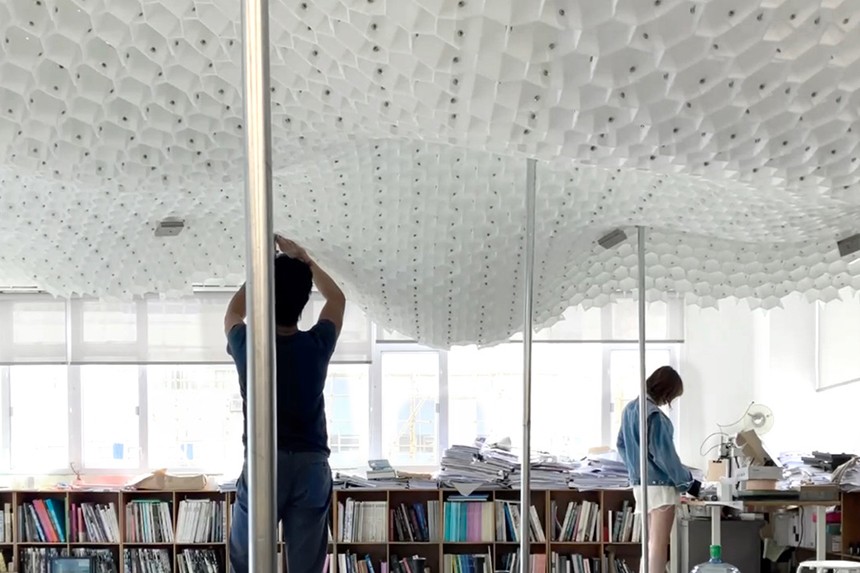PangArchitect
Architect Angela Pang combines design, research and teaching in her work. With her Rational Form Making approach, she aims to provide answers to the fundamental question: How can we build more with less? In her office PangArchitect in Hong Kong and Boston and as an assistant professor at the Harvard Graduate School of Design, she creates architectural innovation with precise analysis, digital methods and experimental model making. In the search for objectivity in design, Pang's approach combines creative freedom with the interaction with natural forces and material-conscious efficiency and questions common design processes. At the centre of the exhibition at Aedes is an impressive 3D-printed, experimental prototype of a pavilion on a scale of 1:2.5, which the office is planning for a public space in Hong Kong. The modular installation is a network of 1,500 identical hexagons and explores the dynamic interplay of gravity in the search for free form. Two of the office's key projects are also presented: New Library Extension of the Hong Kong Polytechnic University and Hong Kong Literature Archive & Research Center. Both projects are exemplary for the research into rational forms. Rational Form Making invites you to rethink architecture as a balance between aesthetics, logic and ecological construction and is a plea for architecture as a precise science with poetic effect.
The research into Rational Form Making is dedicated to the design process of architecture. PangArchitect have set themselves the task of finding a balance between creative freedom and optimized form. This approach uses the forces of nature - especially those of gravity, wind and material behavior - against the background of studies that have shown that a form is optimal when the forces of nature are taken into account.
For Angela Pang, these rules of nature form the basis for the development of optimized architecture between material economy, functionality and aesthetics. In an interdisciplinary manner between analog models and computational predictions, the team researches surprising 'spatial forms' and continually explores the limits of the functionality of these spaces.
"We don't know in advance what to expect, but that's also what's exciting about this research. We discover a lot through the process of practical making and testing, and can reinterpret the knowledge about forms to broaden our perspective - this is my research interest - Rational Form Making." - Angela Pang
At the heart of the exhibition is an example of PangArchitect's experimental process: an installation of a modularized net made of 3D printed hexagonal modules, which, when attached to supports, creates a pavilion. The net is suspended from supports that are deliberately arranged randomly and not in a grid, and thus takes on a very individual shape through gravity. The pavilion is an outdoor learning space for a revitalization project on the site of a former water pumping station in Hong Kong. The design combines the sea and the mountain to create an idyllic public space in a dense city.
The installation is also emblematic of the practice's interest in exploring the abolition of the traditional column grid. They refer to this principle as "column (un)grid".
Opening: March 28, 2025, 6:30 p.m.
Hans-Jürgen Commerell (Aedes, Berlin)
Julia Schlütsmeier-Hage (Aedes, Berlin)
Regine Leibinger, architect (Barkow Leibinger, Berlin/New York)
Angela Pang, PangArchitect (Hong Kong/Boston)
